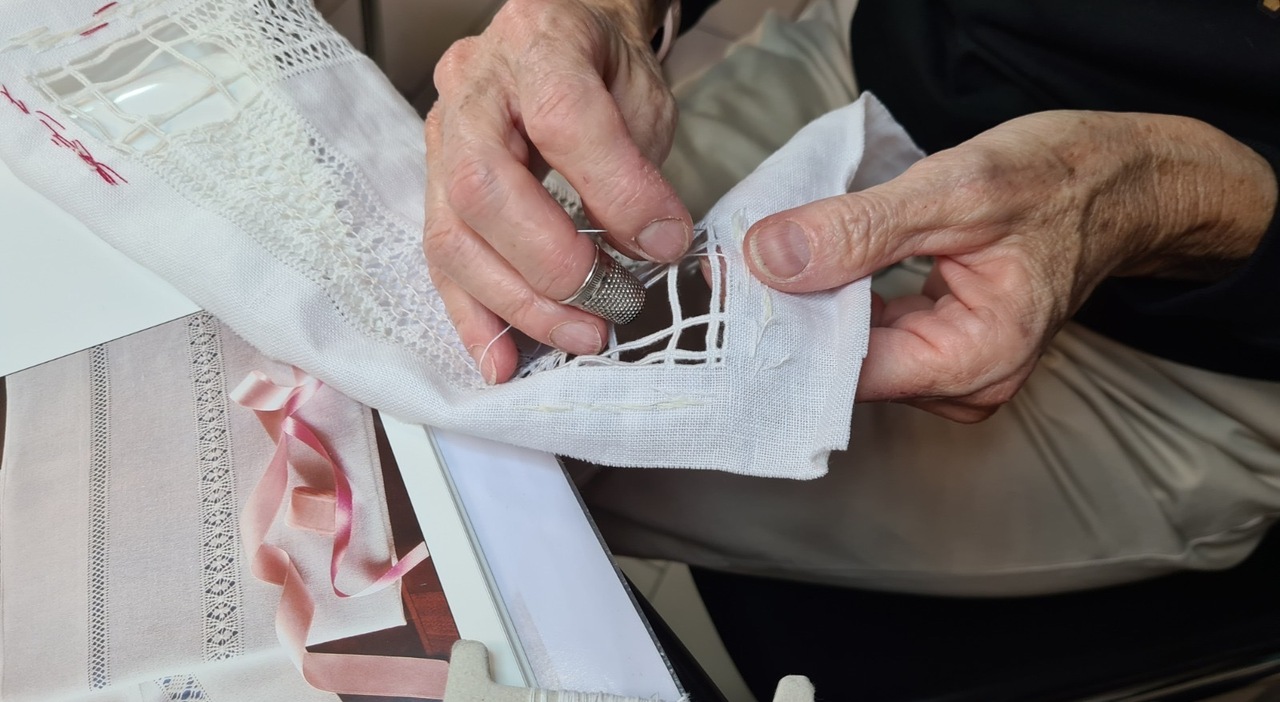The Pope's Embroiderers are a tireless, invisible, unknown team to most, capable of authentic artistic miracles. With needle and thread, this network of over a hundred people from any social class and age, retirees, mothers, secretaries, workers, for some years now has been creating textile art masterpieces destined for the majestic altars of St. Peter's Basilica, huge surfaces to be covered with the finest linen and impressive embroidery swirls, in an endless sequence of concentric spirals giving life to the famous Ars Canusina, a high precision medieval embroidery capable of arousing astonishment for its beauty already in the time of Countess Matilde di Canossa, one of the four noblewomen buried in the Vatican.
REGGIO EMILIA
Meticulous, patient, capable of working day and night to finish on time artifacts loaded with this precious tradition. For the first time, at the end of January, the Vatican Museums will display some of the embroidered works that on February 22, in St. Peter's, will be placed on the Chair's altar. The skill in using needle and thread was acquired at the Reggio Emilia embroidery school, a non-profit unique in the world where the secrets of Ars Canusina are revealed.
The next delivery for the Pope's Embroiderers is the Tablecloth of Forgiveness. "It is a huge and complex embroidery. A job that required months and months of continuous activity, without rest. The work circulated among all of us". Speaking on behalf of all is the spokesperson of the team, Sandra Cosmi, from Reggio Emilia, creator of this journey that led them during Covid to embroider for the Pope. Sandra, who has been retired for years, immediately wants to make it clear that for none of them the activity is for profit. "We do not receive compensation or salaries. We are all volunteers. We do this service to the Church and Pope Francis for love. Everything started with the small tablecloth commissioned for the chapel in Santa Marta where he first celebrated the public morning masses". Given the result, the commitment required by the Vatican for the Embroiderers has increased. "Now we are already working for the large tablecloth that will be destined for Bernini's Altar in view of the Jubilee of 2025. It will be a huge embroidery work, considering the dimensions of that space in the basilica".
With their artifact they will have to cover every square centimeter for a total surface of tens and tens of meters. Sandra laughs: "I don't know how we will do it, probably we will embroider in shifts even at night, but I know we will succeed. Embroidering for us remains a joy of the heart, it represents a way to feel close to each other, to share the problems of the day, being together helps to make many small troubles disappear, lightens the heaviness of family loads. It's relaxing". The design of the maxi jubilee tablecloth to be filled with laces and swirls is still a secret.
ART
It is only known that it summarizes the universality of the entire Church and its future. Each star planned in the embroidery is equivalent to a diocese in the world. Obviously it must be finished and delivered by Christmas. Sandra tells that the Pope's Embroiderers ("out of passion") sacrifice almost all their free moments, sometimes even in the evening, after putting the children or grandchildren to bed, dedicating to Ars Canusina many Sundays and holidays. For many, learning embroidery, from cross stitch to ornaments that require the use of more threads, more hands, over time has even been a therapy. "We find that embroidering is good. Some of us were directed to embroidery by doctors, even by some oncologists. Thanks to embroidery, many people have overcome difficult periods, full of darkness and rather depressive".
WOMEN
There is also another golden thread, a story embroidered in history, which unites these women to the rediscovery of Canusino embroidery: an artistic expression inspired by the decorative elements that adorned the typical monuments of the period of Matilde di Canossa. Sandra Cosmi indicates as the progenitor one of the first Italian women psychiatrists - Maria Bertolani del Rio - who already at the beginning of the twentieth century had the intuition to transform the historical traces of the Matildic friezes carved in the stone of many medieval monuments into Ars Canusina and transport them onto canvas or ceramics. She thus introduced - for the first time - within a mental hospital (the San Lazzaro Psychiatric Institute in Reggio Emilia), the first creative and manual work to treat very young patients. Often they were only ten years old and at the time they were abandoned or locked up in these harsh structures because families could not bear the shame of having psychiatrically ill children.
This article is automatically translated
